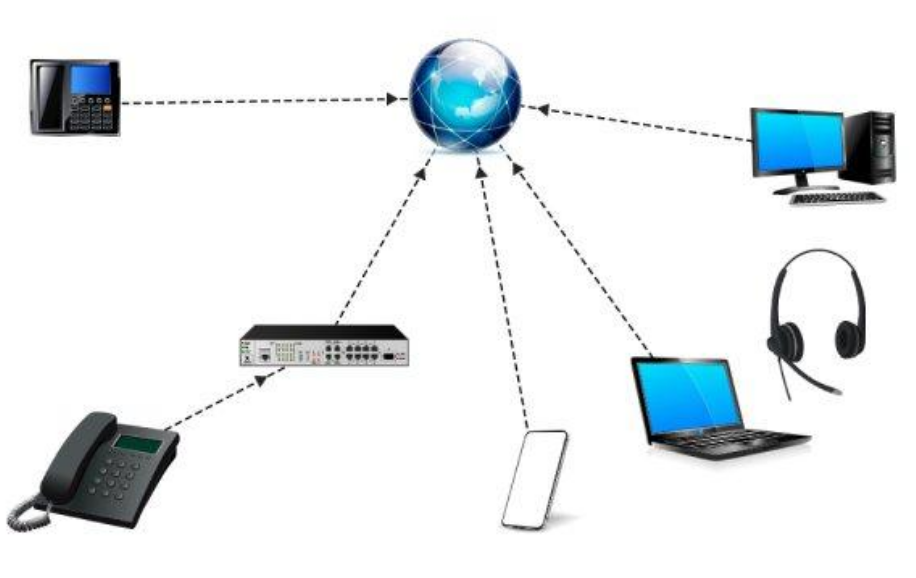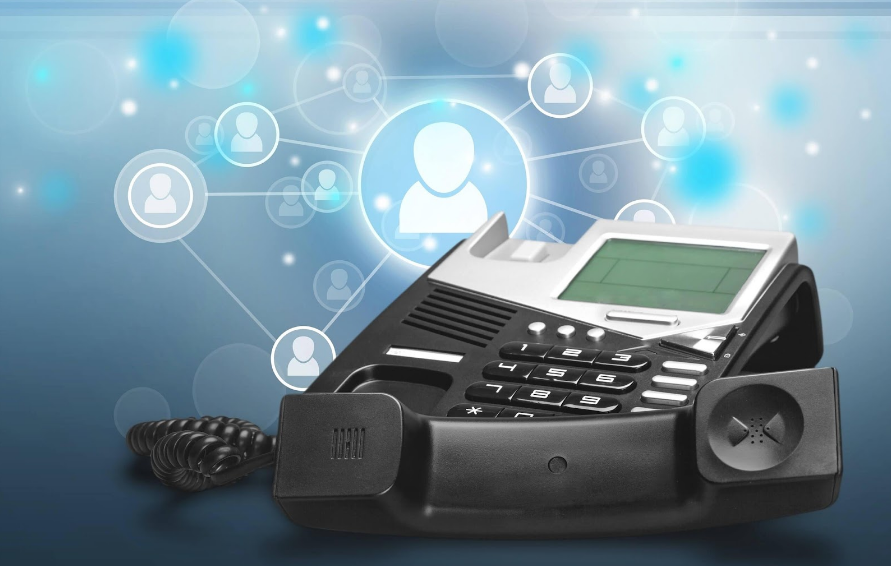What is the difference between SIP telephony and IP?
SIP i IP-telefoniya: v chem raznitsa?
Mnogiye kommercheskiye struktury, ofisnyye organizatsii otkazyvayutsya ot standartnykh formatov telefonnoy svyazi, perekhodyat na IP-telefoniyu, SIP-telefoniyu i podobnyye tekhnologii. Takiye formaty optimiziruyut raskhody, otkryvayut mnozhestvo dopolnitel'nykh vozmozhnostey i funktsiy. Pered prinyatiyem okonchatel'nogo resheniya, odnako, nuzhno ponyat', v chem zaklyuchayutsya otlichiya mezhdu etimi vidami svyazi.

Preimushchestva
Vnedreniye novykh formatov telefonii obespechivayet biznesu sleduyushchiye preimushchestva:
- Snizheniye raskhodov, uluchsheniye kommercheskikh pokazateley predpriyatiya.
- Uproshcheniye upravleniya call-tsentrom.
- Stabil'no vysokoye kachestvo svyazi vne zavisimosti ot geograficheskogo polozheniya sobesednikov, rasstoyaniya mezhdu nimi.
- Podderzhka mnogokanal'nosti. Vne zavisimosti ot kolichestva odnovremenno postupayushchikh vyzovov, oni effektivno prinimayutsya i obrabatyvayutsya.
- Prostota modernizatsii. Po mere rosta potrebnostey predpriyatiya, rasshireniya kliyentskoy bazy, mozhno narastit' moshchnosti IP-telefonii, dobavit' novyye ustroystva, nastroit' funktsii avtomatizatsii.
- Vnedreniye intellektual'nykh algoritmov upravleniya vyzovami, chto snizhayet nagruzku na operatorov pri sokhranenii vysokogo kachestva kliyentskogo obsluzhivaniya.
- Obshcheye uluchsheniye kachestva servisa, operativnoye resheniye zaprosov i trebovaniy kliyentov, chto ukreplyayet reputatsiyu organizatsii, pozvolyayet operedit' konkurentov.
Glavnyy vopros
SIP-telefoniya – eto ne samostoyatel'naya tekhnologiya, a odin iz podvidov IP. Proshche govorya, ona tak zhe otlichayetsya ot IP, kak sedan – ot legkovogo avtomobilya, iPhone – ot smartfona ili noutbuk – ot EVM. Nekotoryye istochniki dazhe ne differentsiruyut eti ponyatiya.
Dlya luchshego ponimaniya temy, konechno, nuzhno pogruzit'sya v neye neskol'ko glubzhe, podrobneye poznakomit'sya s opredeleniyami, terminami, funktsiyami, spetsifikatsiyami SIP i IP.
IP-telefoniya: ponyatiye i printsip raboty
IP-telefoniya – klass telefonnoy svyazi, predpolagayushchiy peredachu informatsii ne po standartnym setyam, a po internet-protokolam. Algoritm raboty sistemy mozhno predstavit' sleduyushchim obrazom:
- Transformatsiya analogovogo signala v tsifrovuyu formu, dlya chego primenyayetsya spetsial'nyy modul', tsifro-analogovyy preobrazovatel'.
- Kodirovka signala dlya effektivnoy, stabil'noy svyazi mezhdu abonentskimi ustroystvami.
- Drobleniye obshchego potoka informatsii na pakety. Smysl dannoy stadii – uproshcheniye, optimizatsiya peredachi dannykh pri pomoshchi internet-protokolov. Peredacha dannykh yedinym massivom – slishkom riskovannyy algoritm, odna oshibka privedet k neobkhodimosti povtoreniya vsego protsessa, chto dolgo, sozdayet izbytochnuyu nagruzku na set'. Paketnyy format predpolagayet, chto v sluchaye sboya dostatochno povtorit' otpravku tol'ko odnogo, povrezhdennogo, paketa.
- Otpravka dannykh, ikh dostavka vyzyvayemomu abonentu.
- Izvlecheniye i rasshifrovka informatsii. Tsifrovoy potok transformiruyetsya v golosovoy signal.
- Vosproizvedeniye signala na abonentskom ustroystve.
IP-telefoniya: klassifikatsiya
Osnovnoy klassifikatsionnyy pokazatel' dlya IP-telefonii – format protokola, ispol'zuyemogo dlya peredachi informatsii. Naibol'sheye rasprostraneniye poluchili 3 varianta:
- H.323. God poyavleniya – 1996. Nesmotrya na pochtennyy vozrast, do sikh por nakhodit shirokoye primeneniye pri organizatsii massovykh konferentsiy, obespechivayet uverennoye podklyucheniye k seansu svyazi srazu neskol'kikh uchastnikov.
- MGCP. God razrabotki – 1999. Osnovnaya osobennost' formata – tsentralizatsiya upravleniya, za nego otvechayet spetsial'nyy modul', TSUP, ne vzaimodeystvuyushchiy s informatsionnymi potokami. MGCP – odno iz luchshikh resheniy, yesli nuzhno sinkhronizirovat' peredachu informatsii mezhdu IP-setyami i gorodskimi liniyami svyazi.
- SIP. Kak i MGCP, on poyavilsya v 1999 godu, no okazalsya maksimal'no universal'nym, vostrebovannym. Bazoy dlya nego posluzhili populyarnyye internet-protokoly HTTP i SMTP, chto ob"yasnyayet nalichiye mnozhestva tozhdestvennykh chert. Peredacha informatsii stroitsya po printsipu “kliyent-server”, dlya peredachi zagolovkov ispol'zuyetsya ASCII-tekst, chto isklyuchayet slozhnosti pri prochtenii informatsii, garantiruyet stabil'nost' seansa svyazi, isklyuchayet obryvy.
SIP and IP telephony: what is the difference?
Many commercial structures and office organizations are abandoning standard telephone communication formats and switching to IP telephony, SIP telephony and similar technologies. Such formats optimize costs and open up many additional opportunities and functions. Before making a final decision, however, you need to understand the differences between these types of communication.

Advantages
The introduction of new telephony formats provides businesses with the following benefits:
- Cost reduction, improvement of commercial performance of the enterprise.
- Simplification of call center management.
- Stably high quality of communication regardless of the geographic location of the interlocutors, the distance between them.
- Multi-channel support. Regardless of the number of simultaneously incoming calls, they are effectively received and processed.
- Ease of modernization. As the needs of the enterprise grow and the customer base expands, it is possible to increase the capacity of IP telephony, add new devices, and set up automation functions.
- Implementation of intelligent call management algorithms, which reduces the workload of operators while maintaining high quality of customer service.
- General improvement of service quality, prompt resolution of customer requests and requirements, which strengthens the reputation of the organization, allows you to get ahead of competitors.
The main question
SIP telephony is not an independent technology, but one of the subtypes of IP. Simply put, it differs from IP as a sedan differs from a passenger car, an iPhone differs from a smartphone, or a laptop differs from a computer. Some sources do not even differentiate these concepts.
For a better understanding of the topic, of course, you need to delve into it a little deeper, get to know the definitions, terms, functions, specifications of SIP and IP in more detail.
IP telephony: concept and operating principle
IP telephony is a class of telephone communication that involves the transmission of information not over standard networks, but over Internet protocols. The algorithm of the system can be represented as follows:
- Transformation of an analog signal into digital form, for which a special module, a digital-to-analog converter, is used.
- Signal encoding for efficient, stable communication between subscriber devices.
- Splitting the general flow of information into packets. The meaning of this stage is simplification, optimization of data transmission using Internet protocols. Transmitting data in a single array is too risky an algorithm, one mistake will lead to the need to repeat the entire process, which takes a long time and creates an excessive load on the network. The packet format assumes that in the event of a failure, it is enough to repeat the sending of only one, damaged, packet.
- Sending data, delivering it to the called subscriber.
- Extracting and decoding information. The digital stream is transformed into a voice signal.
- Playing the signal on the subscriber's device.
IP telephony: classification
The main classification indicator for IP telephony is the protocol format used to transmit information. The most widespread are 3 options:
- H.323. Year of appearance - 1996. Despite its venerable age, it is still widely used in organizing mass conferences, provides a reliable connection to the communication session of several participants at once.
- MGCP. Year of development - 1999. The main feature of the format is centralization of control, a special module, the MCC, is responsible for it, which does not interact with information flows. MGCP is one of the best solutions if you need to synchronize the transfer of information between IP networks and city communication lines.
- SIP. Like MGCP, it appeared in 1999, but turned out to be the most universal, in demand. It was based on the popular Internet protocols HTTP and SMTP, which explains the presence of many identical features. Information transfer is based on the “client-server” principle, ASCII text is used to transfer headers, which eliminates difficulties in reading information, guarantees the stability of the communication session, and eliminates breaks.
Features of SIP telephony
SIP telephony belongs to the category of voice signal transmission protocols, which are based on the principles of IP telephony. The abbreviation SIP stands for “Session Initiation Protocol”, which can be translated as “session establishment protocol”. The SIP protocol is universal, suitable for transmitting not only voice calls, but also for video conferences, establishing connections in online games, and solving many other similar problems.
A data transmission session within this technology is carried out in several stages:
- INVITE. At this stage, a connection is established, an invitation is sent to the called subscriber to participate in the communication session.
- BYE. End of communication. Activated at the first request of one of the subscribers.
- OPTIONS. Sending data about the specific features of a specific communication session, its technical and other significant aspects.
- ACK. Receiving a positive response to an offer to start a conversation.
- CANCEL. Stopping the search for the subscriber with whom it was planned to establish a connection.
- REGISTER. The stage at which data is transmitted to the SIP server indicating the user's geographic location. If necessary, this data is sent to all local addresses.

Advantages
SIP telephony has the following advantages:
- Using the ASCII format when sending headers. This simplifies and speeds up reading regardless of what subscriber devices are used in the network.
- Universality, effective work with many protocols used to receive and send information.
- Ease of management. SIP allows you to do without a central control device, which allows you to form networks with a flexible structure that can be easily modified, expanded, and improved if necessary.
- A variety of auxiliary services and capabilities. For example, telephony can be synchronized with business applications, set up automatic call recording to monitor the work of operators, conduct random checks, and resolve controversial situations.
- Multifunctionality. SIP is the optimal solution for organizing telephony in networks of various sizes, types, and purposes, from small private ones to huge corporate ones.
- Security. The protocol supports encryption algorithms that protect data from intruders. Even if the interception is successful, they will not be able to benefit from it.
- DNS support. This feature allows you to set up a network faster, easily detect people who will participate in the communication session.
- Minimum requirements for Internet connection speed. Stability of data transfer is guaranteed even at a speed of 64 kilobits per second.

Equipment selection
Switching to IP telephony is a rational solution for any enterprise that wants to strengthen its position in the market, optimize costs, and improve the quality of service. Practice shows that this is beneficial for organizations regardless of the specifics of their activities, be it commercial, administrative or other structures. To ensure maximum efficiency of the system, you need to responsibly approach the selection of equipment. The options are as follows:
- IP phone. Externally, it looks like a regular device, but it supports data exchange via IP, is equipped with an RJ-45 port or similar, allows synchronization with a computer, modem, wireless router.
- Phone with IP gateway support. If the enterprise prefers to use existing devices for calls, then each one must be connected to an IP gateway. The gateway's task is to transform an analog signal into a digital one, which is necessary to support IP telephony.
- A computer, laptop, or smartphone with an installed phone program. In this case, there are many options; you can easily find a solution for both iOS and Android.
Summing up
SIP telephony and IP telephony are not identical concepts, but they are as close as possible, related. SIP is one of the most technologically advanced subtypes of IP, which can be recommended to any organization interested in strengthening its reputation, market position, and improving the quality of customer service.
There are essentially no negative aspects to these communication methods. Investments associated with the purchase of specialized equipment, connecting the Internet for stable data transmission, very quickly pay off and justify themselves.
Answers to popular questions
How soon can I start using the service?
The user account is opened immediately after the application is submitted.
Immediately after making the payment, you can start using the service immediately.